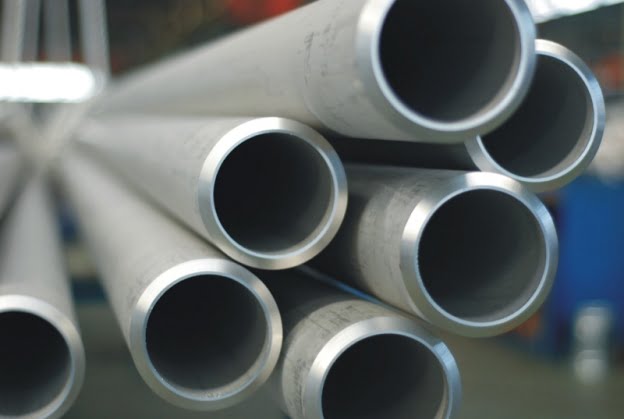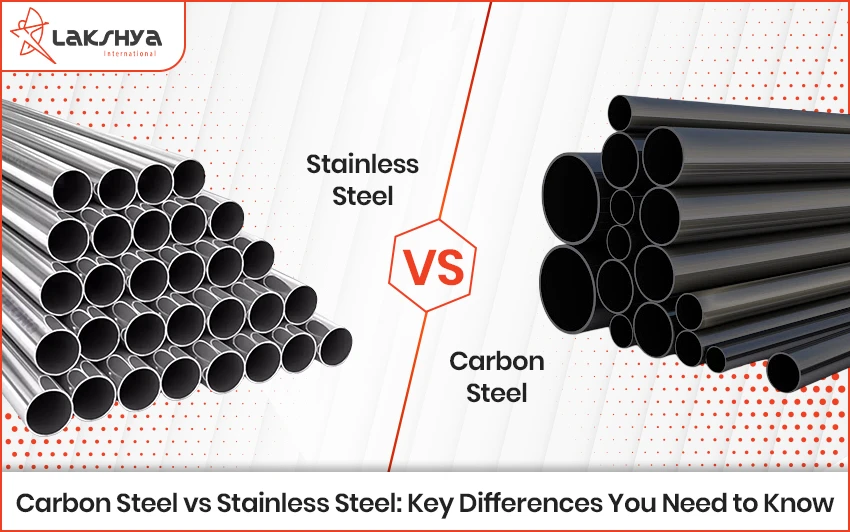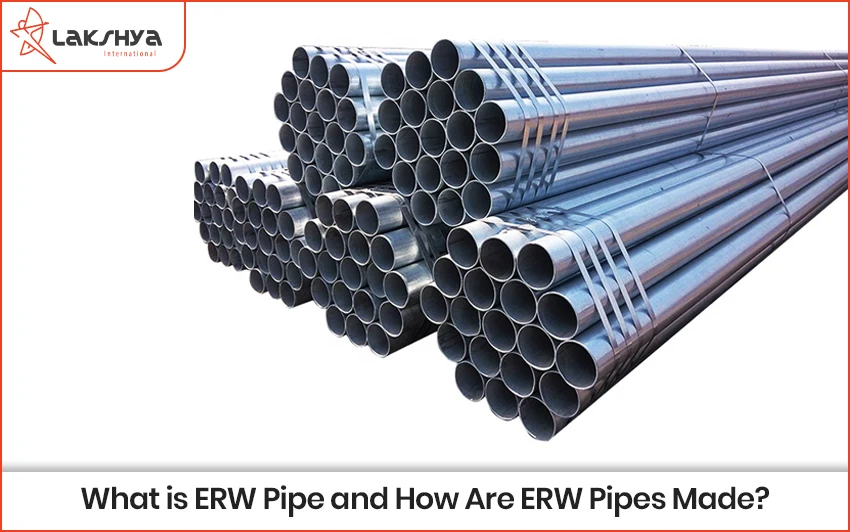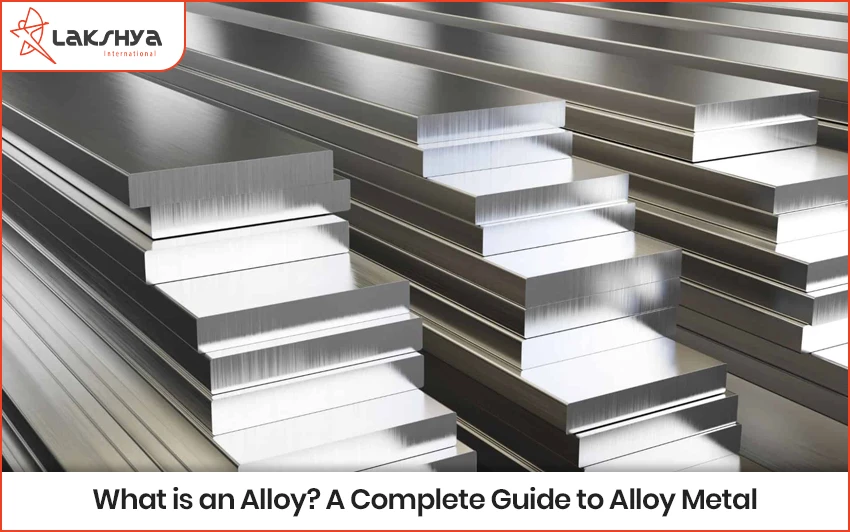What are Pipes?
Long, hollow steel pipes are employed for a variety of applications and circumstances. Due to their adaptability, pipes are the most profitable product in the steel sector. They are widely utilized to transport movable fluids and tiny solid particles. Because of their remarkable strength, they are also utilized in construction for tasks like heating and plumping or underground transit of water and gas through cities.
What are Steel Pipes?
As a result of their composition of iron and other metals, such as aluminum, manganese, etc., steel pipes offer more strength and durability than iron pipes. They are galvanized in a hot zinc bath or by an electroplating process, and they are either seamless or welded along their length. Zinc is an acceptable coating material for water pipes because it is non-toxic to humans.
How is steel pipe used?
Pipes are utilized in structures, transportation, and manufacturing. The inner diameter varies according on the wall thickness, while the sizes are determined by the outside diameter. Depending on the pressures the pipe must withstand, certain applications demand larger pipe walls.
Structural Use of steel pipe
Construction Piles
Scaffolding Poles
Manufacturing Use of steel pipe
Guard rails
Bollards
Bike racks
Transport Use
Most Common Steels Used in Process Piping Industry
There are several sorts of pipe-grade steel available. Stainless steel is the second most commonly used material in process industries, after carbon steel, due to its excellent corrosion-resistant qualities.
Carbon Steel
In the pipeline sector, carbon steel is the most prevalent material type. The chemical industry, process facilities, and general refinery companies all require carbon steel pipe fittings.
In addition, they are used to produce neutral or aqueous solutions.
Carbon steel’s operating temperature typically ranges from -29 °C to 427 °C.
In carbon steel materials, high-strength carbon steels are also available in addition to low-temperature carbon steel (LTCS). Low-temperature carbon steels can be utilized at temperatures as low as -46 degrees Celsius.
When a type of high-quality steel known as “dead carbon steel” is melted, it is completely deoxidized.
Materials used to produce killed carbon steel are more accurate and of higher quality than those used to produce normal carbon steel, and often include less air.
Alloy Steel
Alloy steels are steels with precise amounts of alloying elements. In general, alloying elements increase the steel’s strength and resistance to stress or shock.
In addition to nickel, chromium, molybdenum, manganese, silicon, and copper, various other compounds are employed in the production of steel.
In the industrialized world, many alloy and concentration combinations are utilized, each designed to create a certain property.
In the piping business, high-alloy steels are recommended for usage in circumstances where they must withstand harsh conditions, such as extreme heat or cold.
With the right use of chemistry and heat treatment, damage-resistant pipes that are both robust and flexible can be manufactured. Due to its durability, alloy pipe is frequently utilized in the oil & gas and power generation industries.
Alloying compounds enhance the corrosion resistance of steel pipes. Consequently, chemical industries favor it greatly.
Stainless Steel
In addition to carbon steel and alloy steel, conventional pipe materials also include stainless steel. They are easily constructed into a variety of forms, resistant to corrosion, and normally operate between -257 and 538 °C. There are three different types of stainless steel:
Martensitic stainless steel – In addition to 12–20% Cr, martensitic alloys contain a regulated quantity of carbon and other additives. Type 410 is typically used for this task. The tensile strength of fibres can be increased through heat treatment. Austenitic stainless steels have superior corrosion resistance and are often employed in moderately corrosive situations.
Ferritic stainless steel – Both a low carbon content (0.1%) and 15–30% Cr are present in ferritic steel. By increasing the Chloride content, corrosion resistance is improved. Typical ferritic stainless steel, Type 430. These can be strengthened with cold working, but not through heat treatment. Many plants that produce nitric acid utilise type 430. In addition, it is resistant to scaling and oxidation up to 800 °C.
Austenitic stainless steel – Austenitic steel offers the highest corrosion resistance among the three categories. These steels consist of 16–26% Cr and 6–22% Ni. Low carbon content (0.08% maximum) reduces carbide precipitation Welding can result in Cr carbide precipitation, which lowers the alloy’s chromium concentration and decreases its corrosion resistance in some situations, particularly nitric acid. The elimination of carbide precipitation is facilitated by heating (solution annealing). To prevent precipitation, special steels stabilized with titanium, niobium, or tantalum have been created (Types 321,347 & 348). The use of low-carbon stainless steel, such as kinds 304L and 316L, with a calorific value of no more than 3% is another option.
Precipitation Hardened stainless steel – Precipitation Due to its high strength, heat treatability, and magnetic characteristics, hardened stainless steel provides superior corrosion resistance and an exceptionally high strength-to-weight ratio. It is utilized in the production of springs and aerospace components. 17-7PH and 17-4PH are two stainless steel kinds that are precipitation-hardened.
Duplex / Super Duplex stainless steel – Compositions of Duplex and Super Duplex stainless steel comprise both Austenite and Ferrite. This grade delivers the benefits of both austenite and ferrite stainless steel due to its structural composition. Excellent corrosion resistance in cracks and pitting. High-stress corrosion cracking resistance and strength. They are utilized in seawater systems, heat exchangers, and structural applications. The EX-UNs codes for Duplex and Super Duplex stainless steel are S32205, S31803, and S32760.
Read More :
Which is better? 304 vs 316 Stainless Steel: The two most widely used grades of stainless steel are 304 and 316. The main distinction is the use of molybdenum, an alloy that significantly improves corrosion resistance, particularly in areas with higher salinity or chloride exposure.
All About Mild Steel: Mild steel is a type of carbon steel that has very little carbon in it. It is also called “low carbon steel.” Depending on the source, the amount of carbon in mild steel ranges from 0.05% to 0.25% by weight. On the other hand, higher carbon steels usually have a carbon content of between 0.30% and 2.0%. If more than that amount of carbon is added, the steel becomes cast iron.




